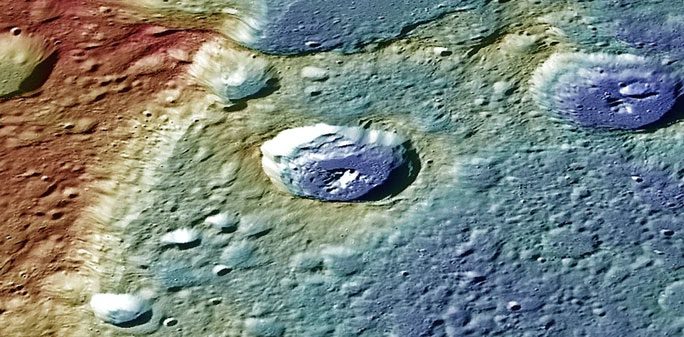A recently published study in the journal Nature Geoscience has confirmed suspicions regarding images transmitted by NASA’s Mariner 10 spacecraft from the planet closest to the Sun.
According to Science Alert, that “unfortunate” planet is Mercury, with new “wrinkles” indicating it continues to shrink.
The rocks and metals that make up this planet appear to be continuously shrinking over billions of years, as its interior cools and heat escapes too quickly, despite being the closest world to the Sun.

Complex surface of Mercury – (Image: NASA).
The notion that Mercury is shrinking has long been suspected, but this new study led by Dr. Ben Man from The Open University in the UK provides the first clear evidence of how apparent the planet’s shrinkage may be and how it continues to shrink.
Dr. Man discovered “scarps”, which are strips of land that have dropped between two parallel fault lines, creating a scarring pattern observed by spacecraft.
These natural scarps, which are less than 1 km wide and less than 100 m deep, suggest they are much younger than the overall terrain structures they lie above.
Based on the fading speed of these surface features, the research team estimates that these structures are less than 300 million years old, which is very “recent” in geological terms.
A total of 244 sites with such “scarps” have been identified through data from NASA’s MESSENGER spacecraft.
These will be key targets for the more advanced BepiColombo mission from Europe and Japan when it begins operations in Mercury’s orbit in early 2026.
Concerns about Mercury shrinking rapidly arose when NASA’s Mariner 10 spacecraft discovered kilometers-high cliffs stretching for hundreds of kilometers, winding across the planet since 1974. These include “wrinkles” that date back 3 billion years.
Another celestial body that is shrinking is the Moon, which still has some active “wrinkles” to this day.


















































